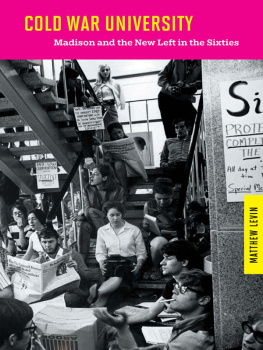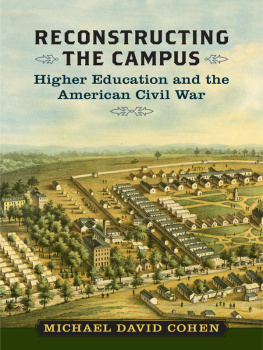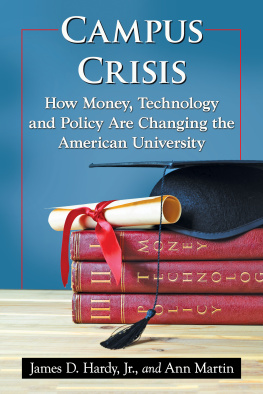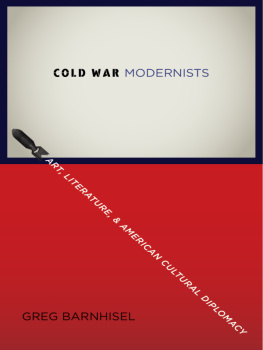
STUDIES IN AMERICAN THOUGHT AND CULTURE

Series Editor
Paul S. Boyer
Advisory Board
Charles M. Capper
Mary Kupiec Cayton
Lizabeth Cohen
Nan Enstad
James B. Gilbert
Karen Halttunen
Michael Kammen
James T. Kloppenberg
Colleen McDannell
Joan S. Rubin
P. Sterling Stuckey
Robert B. Westbrook

Cold War University
Madison and the New Left
in the Sixties
Matthew Levin
THE UNIVERSITY OF WISCONSIN PRESS
The University of Wisconsin Press
1930 Monroe Street, 3rd Floor
Madison, Wisconsin 53711-2059
uwpress.wisc.edu
3 Henrietta Street
London WC2E 8LU, England
eurospanbookstore.com
Copyright 2013
The Board of Regents of the University of Wisconsin System
All rights reserved. No part of this publication may be reproduced, stored in a retrieval system, or transmitted, in any format or by any means, digital, electronic, mechanical, photocopying, recording, or otherwise, or conveyed via the Internet or a website without written permission of the University of Wisconsin Press, except in the case of brief quotations embedded in critical articles and reviews.
Printed in the United States of America
Library of Congress Cataloging-in-Publication Data
Levin, Matthew, 1973
Cold War university : Madison and the New Left in the sixties / Matthew Levin.
p. cm.(Studies in American thought and culture)
Includes bibliographical references and index.
ISBN 978-0-299-29284-3 (pbk.: alk. paper)
ISBN 978-0-299-29283-6 (e-book)
1. University of WisconsinPolitical activityHistory.
2. University of WisconsinMadisonPolitical activityHistory.
3. New LeftWisconsinMadisonHistory.
4. StudentsPolitical activityWisconsinMadisonHistory20th century.
5. Madison (Wis.)Intellectual life20th century.
6. Madison (Wis.)History20th century.
I. Title. II. Series: Studies in American thought and culture.
F589.M15L48 2013
977.583dc23
2012035302
Contents
Acknowledgments
There are many people who assisted with and supported this project over several years. I would like to thank Tony Michels and Jeremi Suri especially for their longstanding encouragement and for helping me focus my ideas and writing. Many people shared generously in recounting memories of Madison in the 1950s and 1960s, and this project would not have been the same without their time and thoughtfulness. The staff members at the Wisconsin Historical Society and the University of Wisconsin Archives were immensely helpful as I conducted research, and Gwen Walker, editor at the University of Wisconsin Press, and the late Paul Boyer offered help and encouragement at crucial points. The anonymous readers for the UW Press spent considerable time reading the manuscript carefully; their extensive comments did much to improve the final product. Finally, I would like to thank my parents for the lifelong encouragement they have offered and especially Alder, Taye, Isaac, and Nicole for sustaining me through the years that it took to complete this project.
Cold War University
Introduction
It was a warm spring afternoon on May 16, 1966, the day of the first large-scale confrontation between students and administrators at the University of Wisconsin in Madison. Known afterward simply as the draft sit-in, the confrontation came on the heels of a failed meeting between university president Fred Harvey Harrington and leaders of a recently formed student group, the Committee on the University and the Draft; with Harrington declaring that he would not give in to their demands, approximately four hundred students conducted a quick vote and then filed into the universitys recently built Administration Building. The university, for its part, did not try to oust the demonstrators from the building. City and campus police remained nearby, but their directions were to take no action as long as the students did not damage property or interfere with university functions. Occupying the first floor of the building, near the campuss eastern edge, the students would stay for more than seventy-two hours. They busied themselves with speeches, debates, singing, and even studying; those in the building on the first night of the protest watched a screening of Charlie Chaplins Modern Times, a Depression-era classic of social protest that parodied the mechanization and dehumanization of modern society.
Among the many factors that led to the sit-in, a tactic adopted most recently from the civil rights movement, the immediate context was the escalation of the Vietnam War and the increasing threat of the military draft. Building on a long tradition of student activism in Madison, the campus antiwar movement had developed rapidly over the previous year, in response especially to the U.S. bombing of North Vietnam that began in early 1965, while draft protest had emerged even more recently. College students had enjoyed a blanket deferment from the draft system under earlier rules, but President Lyndon Johnsons decision to double draft calls in July 1965 meant a shift in policy. In early 1966, the Selective Service System adopted a program similar to that from the Korean War, using students rank-in-class information and the results of the recently reintroduced Selective Service College Qualification Test to determine which students would retain their deferments and which would be eligible for the draft. As protests emerged on several university campuses around the country, the first test in Madison was scheduled for May 14; a small group of students picketed the test site, while a group of two hundred students met and approved a letter to President Harrington, demanding that the university cease any and all cooperation with the Selective Service System. Specifically, students wanted the administration to stop offering campus space for the draft exams and to end its policy of providing students with rank-in-class information that would be used to determine draft eligibility.
The student group that led the protest, the Committee on the University and the Draft, was an ad hoc, or impromptu, group formed in the weeks leading up to the protest. Though lacking a formal leadership structure (a more permanent group, the Wisconsin Draft Resistance Union, would emerge that fall), organizers included graduate students like Evan Stark (sociology) and Robert Cohen (philosophy) as well as a contingent of undergraduates, many of them history majors, like future investigative journalist and 60 Minutes producer Lowell Bergman. One prominent argument against the draft was that it was discriminatory; with a deferment system that protected many students from the draft, it threatened to turn the University of Wisconsin into a sanctuary for middle-class youth, a bastion of privilege that left blacks and poor whites more vulnerable to the draft. Protesters also argued that grades were a poor criteria on which to base life and death decisions, a point echoed by a number of teaching assistants and professors as well.
The sit-in revealed student anger at the draft system, but its most pointed target was the university itself, especially its role in facilitating the draft and, by extension, the war in Vietnam. While university officials believed that their actions, including hosting the draft tests and releasing students rank-in-class information, did not imply an endorsement of the draft system or the war, dissenting students saw the issue from a much different perspective. A leaflet issued by student protesters accused the university of betraying its ideals by cooperating with the military, while another criticism asserted that the university had essentially become a part of the Selective Service System. With headlines from Vietnam forming the backdrop for the protestWorld Peace Hinges on Viet, LBJ Claims, Ky Troops, Tanks Move in on Rebels, and Threat of Open Civil War: Fighting Flares in Da Nang are just a sampling of headlines in one of the citys daily newspapers during the sit-inmembers of the student group drew the connection between what they considered the universitys tacit support for the draft and support for American foreign policy in Vietnam.








 STUDIES IN AMERICAN THOUGHT AND CULTURE
STUDIES IN AMERICAN THOUGHT AND CULTURE 